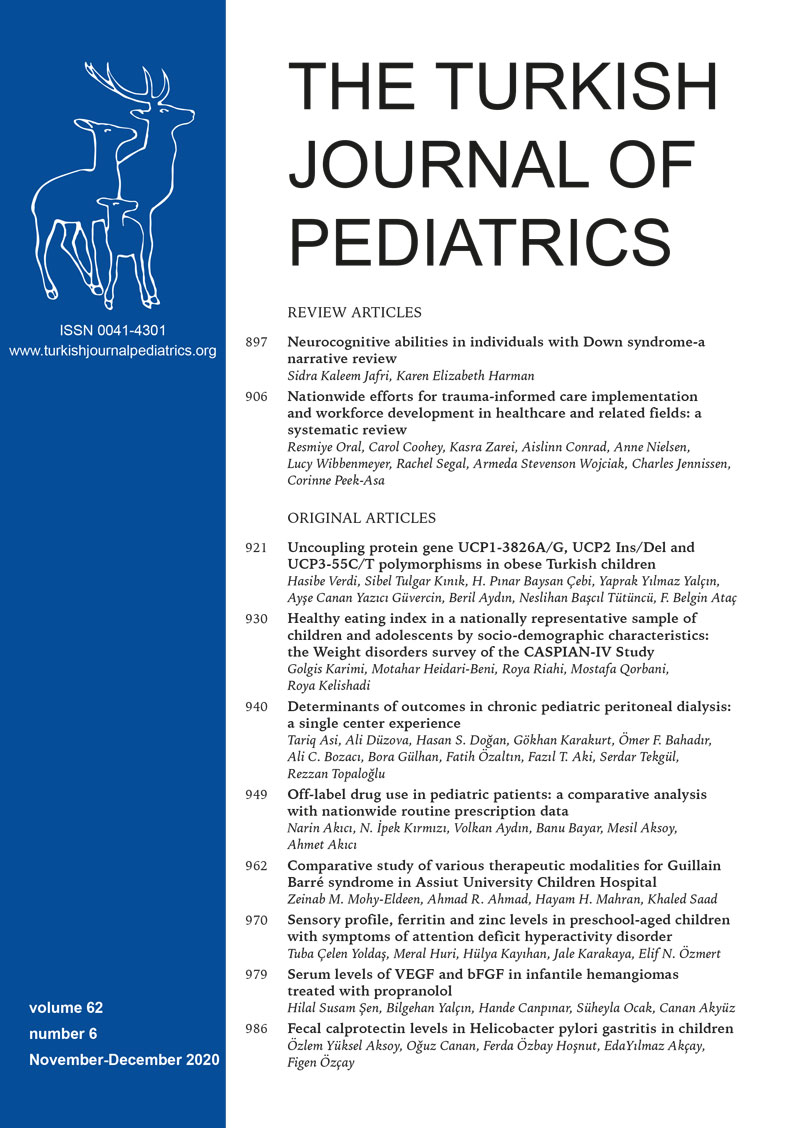Abstract
Background. Infantile hemangiomas (IH) represent the most common type of benign tumors of infancy. Vascular endothelial growth factor (VEGF) and basic fibroblastic growth factor (bFGF) have a central role in the pathogenesis of infantile hemangiomas.
Methods. In this prospective study, we aimed to investigate the relationship between serum VEGF and bFGF levels and clinical characteristics and the serological changes in VEGF and bFGF levels associated with propranolol treatment in infants diagnosed with IH. Blood samples were taken from 34 patients with IH and 10 controls. Serum VEGF and bFGF levels were studied by ELISA.
Results. At initial diagnosis, median serum bFGF levels were 11.1 ng/ml (4.8-16.6) in patients with IH (n=34) and 2.6 ng/ml (1.7-4.7) in controls (p < 0.001), and, median serum VEGF levels for same groups were 58.5 ng/ml (25.3-190.2) and 11.4 ng/ml (8.2-19.8) (p < 0.001), respectively. Serum VEGF and bFGF levels were not correlated. In 18 infants who were treated with propranolol with serial measurements, median serum bFGF levels were 10.7 ng/ml, 9.8 ng/ml and 10.5 ng/ml (p= 0.8), and median serum VEGF levels were 68.6 ng/ml, 63.5 ng/ml and 45.1 ng/ml (p < 0.001) at initial diagnosis, at first and third months, respectively. Median regression rates of the hemangiomas at the first and third months were -%47.3 and -%58.3 (p < 0.001), respectively.
Conclusions. Serum bFGF levels didn`t change in time. Serum VEGF levels seemed to follow the natural course of IH and might be a marker for follow-up. The contribution of propranolol treatment should also be considered.
Keywords: basic fibroblastic growth factor (bFBF), infantile hemangioma, propranolol, treatment, vascular endothelial growth factor (VEGF).
Copyright and license
Copyright © 2020 The Author(s). This is an open access article distributed under the Creative Commons Attribution License (CC BY), which permits unrestricted use, distribution, and reproduction in any medium or format, provided the original work is properly cited.














